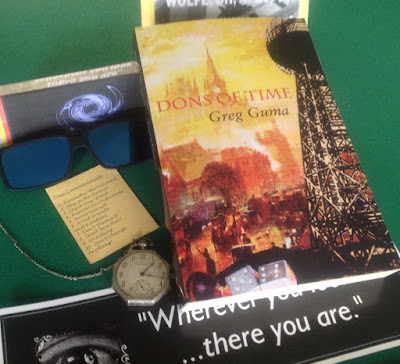Chapter Three: Unwanted Voices
(The Secret War on William Pierce)
As Bill Pierce's tale unfolded it was harder to distinguish facts from speculation and potential fantasy. For example, he claimed that advanced technology was already being used to control subversive activities in the 1950s. Directional bugging devices “were snooping and spying on undesirables,” he claimed.
“Psychological harassment was being widely adopted, and in late 1954 I was subjected to a new electronic voice-thrower. While studying late one evening I heard voices from the sidewalk.”
“He’s a red if ever we saw one,” said a disembodied voice. When Pierce looked outside for the source he saw no one. When he returned to work, however, he heard the voices again. It would not be the last time he heard such things, or attributed them to repression and the national security state.
Some of what he recounted was hard to dispute. The development of nuclear weapons by the Soviet Union, plus the memory of Pearl Harbor, had indeed made intelligence activities a high national priority. “You have to remember, people were desperate about the so-called Communist threat,” Pierce said. “Some of them, although sincere and well-meaning, had a paranoid idea about domestic security that was being encouraged by ambitious opportunists. Vigilante extremism, faked investigations and security procedures sprang up across the country.”
A bit more difficult to verify was his claim that “organized sociology” and “applied psychology” were being mobilized to manipulate reputations, attack the mental reliability of government critics, and conduct systematic psychological harassment. “There were fearsome new ways to attack the mental health, the very sanity, of their victims,” he said ominously.
Given that context, his theory was that he had attracted the attention of some extreme anti-Communists at Syracuse. But it was “impractical to call me before HUAC or file judicial charges, and so instead, they used underhanded psychological harassment to isolate me from the academic community.”
The campaign began in earnest in the spring of 1955, he said, while he was boarding at a house on Broad Street. Two new tenants introduced themselves; Lillian Hartwell, a middle-aged woman studying economics in the Syracuse adult division, and Willard Mays, who called himself a “former OSS man with intelligence experience in Algiers.” Hartwell worked for the Clark Music Company but claimed connections in Argentine diplomatic circles. Mays said he was an electronics expert studying air-conditioning at the Carrier Corp.
Whenever they shared the kitchen, his new friends would use the opportunity to query his feelings about Communism. One night Mays warned, for no apparent reason, that “nowadays if an American has the slightest tinge of red, Bill, he’s had it, he’s through!”
Hartwell was more subtle, casually inquiring about Marxist philosophy, economics, and the Soviet Union. During one such discussion, however, she pointedly informed Pierce that “the FBI has techniques for isolating people who are considered Communistic or otherwise dangerous.” She also pointed out a column in the Syracuse Herald-Journal by Walter Winchell that mentioned the Bureau’s ability to monitor and disrupt a subject’s conversations.
Pierce laughed and replied, “I don’t believe it.”
Next: Chung's Way
Chapter Two





